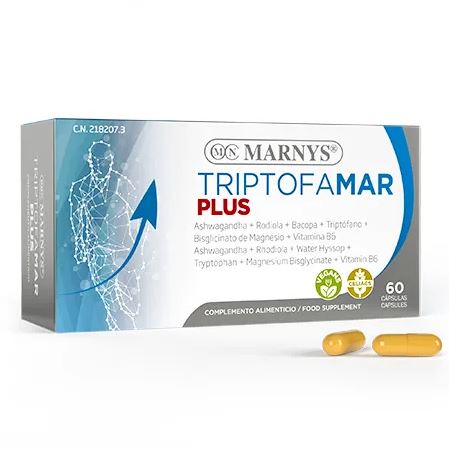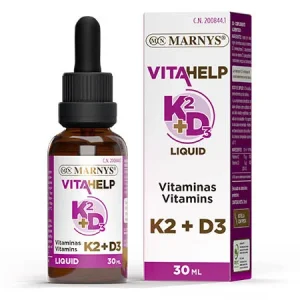L-Tryptophan
This is an amino acid that is the dietary precursor of the neurotransmitter serotonin (a neurotransmitter whose action regulates mood states), melatonin (the hormone that regulates the sleep cycle), and vitamin B3 (niacin).
? Ask us your questions
Share on social networks
FREQUENTLY ASKED QUESTIONS ABOUT TRIPTOFAMAR PLUS
TO KNOW MORE
What are moods?
Mood disorders or affective disorders are characterized by significant alterations in emotions. Globally, major mood disorders have increased by more than 25% since 2020.
The prolonged feeling of sadness or exaltation, sensation of tension or nervousness are examples of how mood disorders manifest. Some signs of these conditions include:
- Negative feelings, such as excessive worry, sensation of fear, irritability or nervousness, sadness, despair, or guilt.
- Muscle tension.
- Lack of concentration, memory failures.
- Changes in sleep patterns.
- Constant fatigue due to lack of energy.
What physiological mechanisms affect mood?
Mood is controlled by the balance of certain compounds called neurotransmitters located in the brain. These are serotonin, GABA, norepinephrine, and dopamine.
Serotonin and dopamine are directly related to the control of emotions, motor and sexual behavior, appetite, circadian rhythms (including sleep), among others. GABA modulates muscle tone and relaxation, while norepinephrine regulates stress, muscle contractility, and metabolic responses.
- In times of stress, do what matters: An illustrated guide. World Health Organization.
- Engmann O & Brancaccio M. Circadian Clock in Brain Health and Disease. Advances in Experimental Medicine and Biology (AEMB, volume 1344).
- Liu L, et al. Herbal Medicine for Anxiety, Depression and Insomnia. Curr Neuropharmacol. 2015; 13(4): 481–493.
- Lucassen PJ, et al. Neuropathology of stress. Acta Neuropathol. 2014; 127(1): 109–135.
- The WHO Special Initiative for Mental Health (2019-2023): Universal Health Coverage for Mental Health































Reviews
There are no reviews yet.